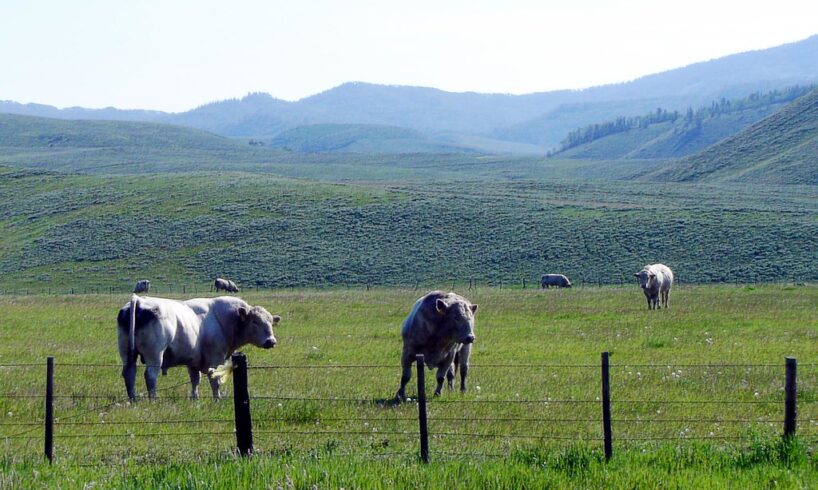
Ranchers and livestock industry officials worry that “rewilding” efforts for predatory species across the Mountain West are moving too fast and will negatively impact rural communities.
In Colorado, voters approved a ballot measure to reintroduce gray wolves and restore populations, but many ranchers and farmers in other states like Wyoming and Montana that have established wolf populations warn they struggle to manage their livestock because of the persistent threat of wolves.
“This issue really hits close to home,” Kent Holsinger, who owns a ranch in North Park near where Colorado’s first wolf attack on livestock in decades happened last year, said during a panel discussion on Tuesday. The discussion was hosted by the Mountain States Legal Foundation (MSLF), a public interest law firm, and included several industry groups.
Colorado voters approved Proposition 114 in November 2020 to require the reintroduction of gray wolves, despite evidence of some wolves already present in the state. The proposition was approved primarily by voters in more populated metropolitan and urban counties, and soundly rejected in more rural areas of the state, according to elections results.
It also set a deadline for the state to lay out a plan to reintroduce the wolves by 2023. Gov. Jared Polis has pushed to have the plan completed by the end of this year, according to the Rocky Mountain Wolf Project, a nonprofit that supports the initiative.
The initiative has created an evolving regulatory environment that’s difficult for farmers and ranchers to keep up with, according to MSLF, which in the past has challenged Endangered Species Act protections in court.
“What I see when I look out at the rewilding process, it’s just crazy,” said Sean Paige, communications director for MSLF. “The rules are constantly changing and the process is constantly evolving. It’s all moving too fast.”
Meanwhile, ranchers and farmers in other parts of the Rocky Mountain region are dealing with mounting losses of livestock, from both wolves and grizzlies.
Jim Magagna, executive vice president of the Wyoming Stock Growers Association, said ranchers and farmers in his state typically experience losses of approximately 3% per year, meaning they may lose 3% of their cattle or livestock from natural causes.
Once gray wolves were reestablished in his state, Magagna said the losses crept up to between 7% and 9%. After grizzly bears were added to the endangered species list, those losses climbed even higher to 14%, he said.
These losses don’t only hurt ranchers and farmers. They can also hurt local taxpayers in the form of predation compensation programs, which are often funded from a state’s general fund.
Predation compensation programs give ranchers and farmers money for livestock killed because of predatory animals. Oftentimes, these programs come with multipliers so that a rancher or farmer can afford to replace their lost income.
For example, Wyoming pays ranchers a multiplier of 7-to-1 for caves and sheep that are killed by a predator. This means that a farmer receives enough money to repurchase seven market-priced sheep or calves if a predator takes out one that they already own.
Not only are these claims expensive for localities, increased predatory activity is also causing health problems for many livestock, Maganga said. Some examples include animals losing weight from additional stress and lower reproduction rates, both of which can threaten the country’s food supply.
George Edwards, executive director at Montana Livestock Loss Board, said that some states in the region are having trouble keeping up with the mounting losses.
Last year, Montana’s Livestock Loss Board paid out more than $345,000 in predatory compensation claims without accounting for multiplier factors, Edwards said.
“We’re seeing that these dangers to our ranchers and farmers that can increase very quickly,” Edwards said.
This article was originally posted on Ranchers worry ‘rewilding’ efforts for predatory animals are moving too fast